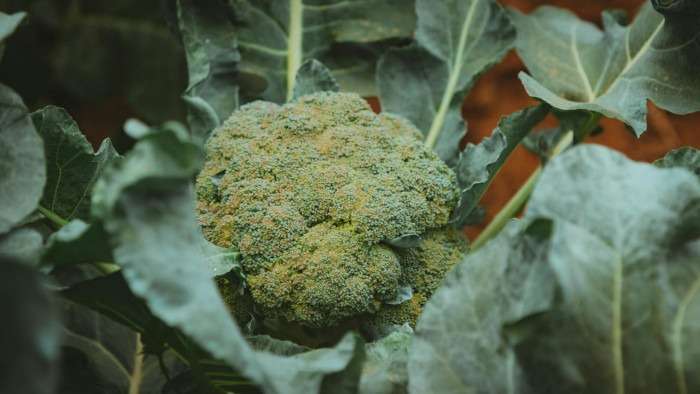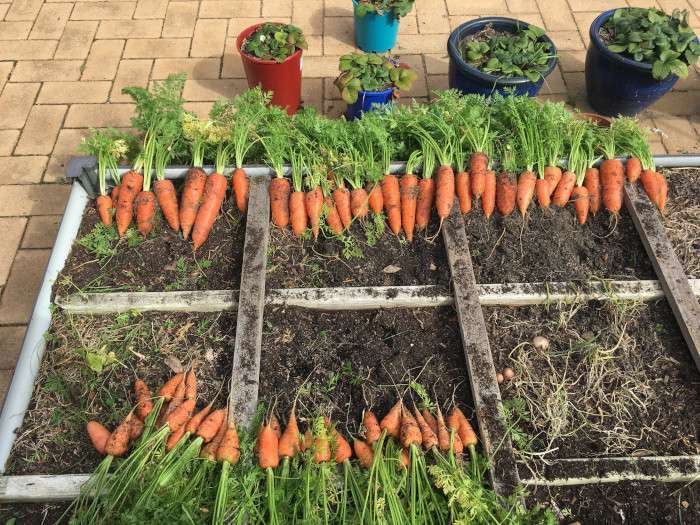Cut and Come Again is a simple method to boost your garden’s yield right away. By timing your harvests, you can get more from the same small plot—perfect for gardeners looking to maximize their space.
I’ve been gardening for years, and this technique has been one of my favourites for making the most of my garden. Today, I want to talk about what it is, how to do it, and the 10 best plants for continuous harvests.
What is “Cut and Come Again”?
The Cut and Come Again technique is a method mainly for harvesting leafy greens and some other crops where you cut back parts of the plant to encourage continuous growth. By harvesting the older, outer leaves or cutting the plant back to the stem, new growth is stimulated, which lets you get more harvests over the growing season.
Why is Cut and Come Again so Good?
- Increased Yield: By regularly harvesting, plants will be stimulated to produce new growth, leading to a more productive garden over the growing season.
- Reduced Waste: Older leaves are harvested before they go yellow and die, reducing waste and ensuring that the harvested leaves are at their peak nutritional value. (You are growing them to eat right?)
- Extended Harvesting Period: This method allows for a longer harvesting period, as new growth is continually encouraged, extending the growing season.
- Healthy Plants: Removing older leaves can help prevent diseases and pests that often target aging foliage.
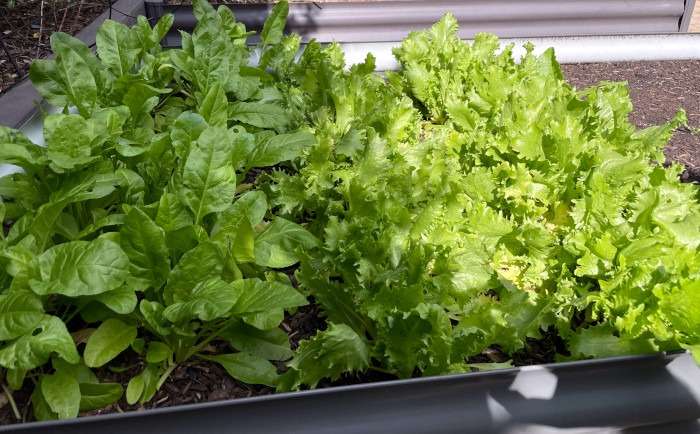
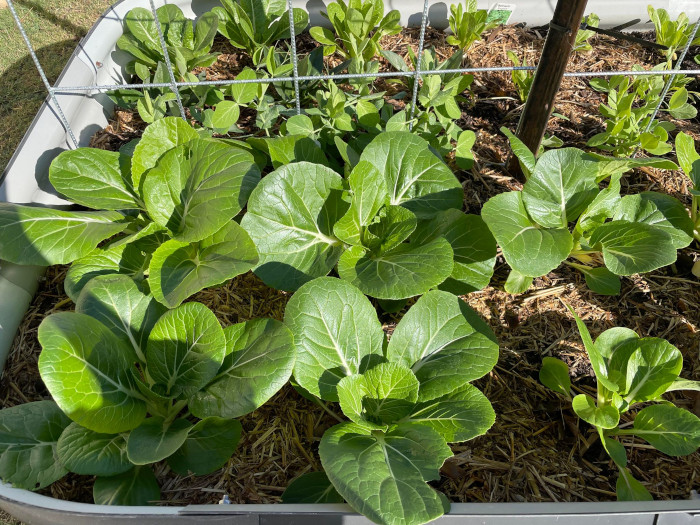
Top 10 Cut and Come Again Vegetables and Herbs
This method works well with most leafy greens. I’ve included a list of some of my favourite crops I use this method with such as:
1. Spring Onions (Scallions)
The easiest crop for this method in my experience and one of my favourites. You can plant spring onions basically anywhere and harvest them whenever you need some for cooking, they will grow back very fast and need minimum care.
- Ideal Cutting Timing: Harvest when they are about 15-20 cm (6-8 inches) tall. This is typically 6-8 weeks after planting.
- Frequency: Every 3-4 weeks.

2. Spinach
Another favorite of mine, like spring onions, these are low-maintenance and perfect for cut-and-come-again harvesting. The baby leaves are especially sweet and tender compared to the older ones.
- Ideal Cutting Timing: Start harvesting the outer leaves when they are about 10-15 cm (4-6 inches) long. This is usually about 4-6 weeks after planting.
- Frequency: Every 2-3 weeks.

3. Kale
- Ideal Cutting Timing: Begin cutting the outer leaves when they are about 15-20 cm (6-8 inches) long. Harvesting can start about 6-8 weeks after planting.
- Frequency: Every 2-3 weeks.

4. Lettuce
This method works best for salad lettuce varieties. Grow them together in a bed, and you can harvest along the row for a continuous supply.
- Ideal Cutting Timing: For leaf lettuce, start harvesting outer leaves when they are about 8-10 cm (3-4 inches) long, usually around 4-6 weeks after planting.
- Frequency: Every 2-3 weeks.

5. Broccoli
Broccoli will regrow side shoots and smaller heads after the main head is harvested, extending your growing season.
- Ideal Cutting Timing: Harvest the side shoots after the main head has been cut, usually about 6-8 weeks after planting.
- Frequency: Every 2-3 weeks or whenever the side shoots are sizeable.
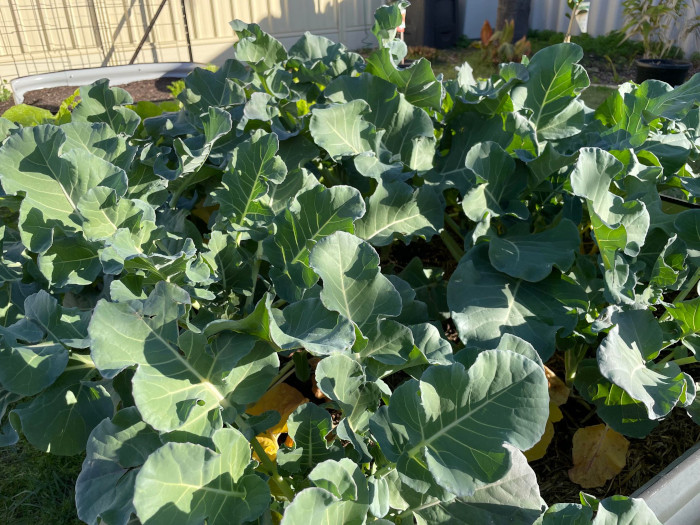
6. Snow Peas
I find with Snow Peas they really appear out of nowhere. One day you have some flowers and the next somehow your plant will be covered in pods ready for harvest.
- Ideal Cutting Timing: Harvest the young pods when they are about 5-7.5 cm (2-3 inches) long, usually around 8-10 weeks after planting.
- Frequency: Every 2-3 weeks.
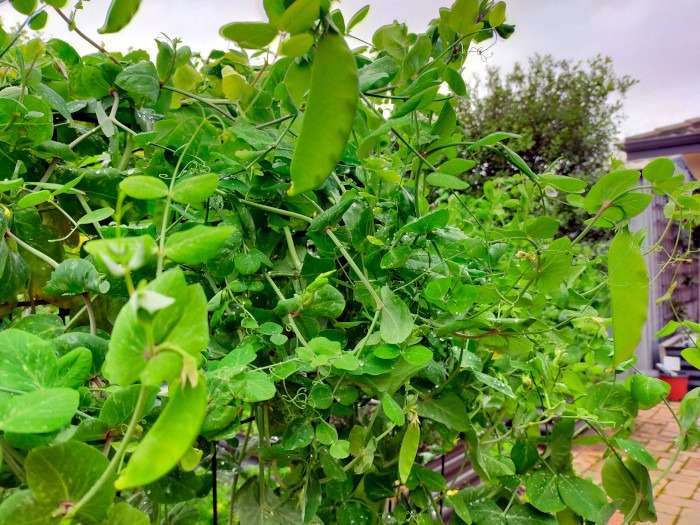
7. Beans (Green Beans)
- Ideal Cutting Timing: Pick the beans when they are about 10-15 cm (4-6 inches) long, typically around 8-10 weeks after planting.
- Frequency: Every 2-3 weeks.
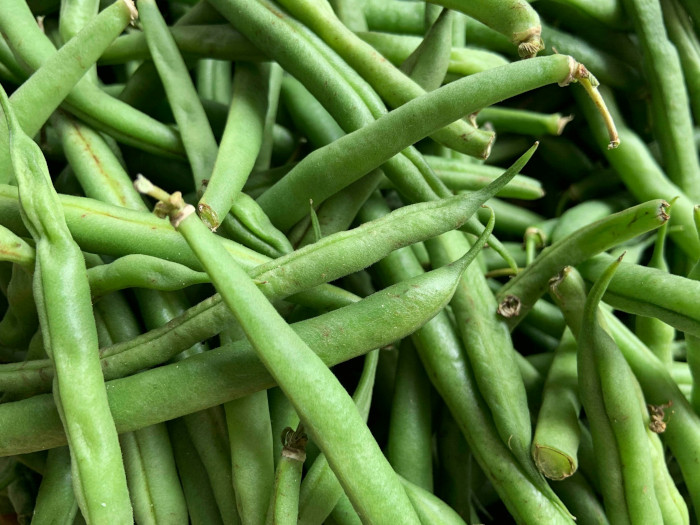
8. Basil
Regularly picking basil leaves encourages a bushier, more productive plant while preventing it from becoming leggy and woody.
- Ideal Cutting Timing: Start harvesting when the plant has at least 15-20 cm (6-8 inches) of growth, usually 4-6 weeks after planting. Cut just above a pair of leaves to encourage bushy growth.
- Frequency: Every 2-3 weeks.
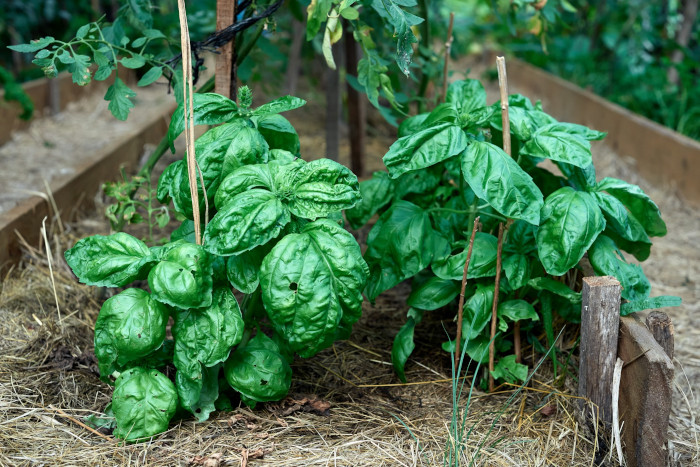
9. Rosemary
When it comes to harvesting rosemary, I’ve found that pinching a sprig off the top whenever I need it for cooking keeps the plant compact and productive.
- Ideal Cutting Timing: Begin harvesting once the plant is well-established, usually after about 20-25 cm (8-10 inches) of growth. Cut sprigs as needed.
- Frequency: Every 3-4 weeks.

Oregano
- Ideal Cutting Timing: Harvest when the plant is about 10-15 cm (4-6 inches) tall, usually around 6-8 weeks after planting. Cut stems just above a leaf pair.
- Frequency: Every 2-3 weeks.
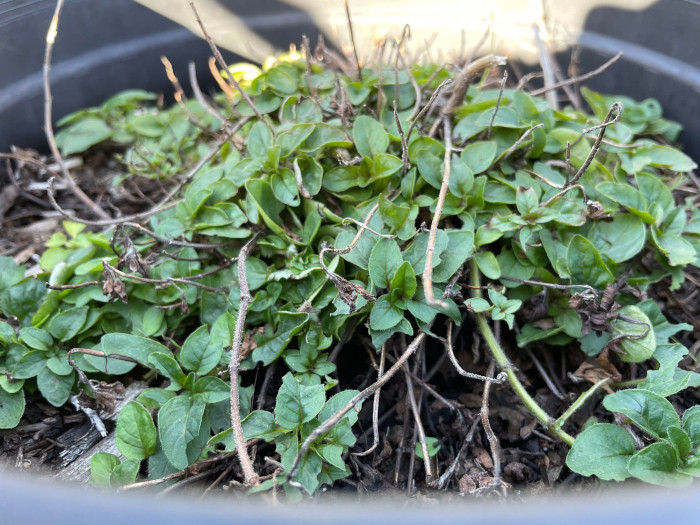
Tips for Maximizing Success with Cut and Come Again
- Harvest Timing: Don’t harvest too often. Give the plant enough time to recover and produce new growth, a few weeks at least.
- Alternate Harvesting: Rotate between different plants or areas of your garden to avoid over-harvesting any single plant.
- Water and Nutrients: Ensure plants receive enough water and nutrients to support continuous growth and recovery after harvesting.
- Monitor Plant Health: Regularly check for signs of stress, disease, or pests.
Conclusion
The “Cut and Come Again” technique is a great way to maximize your garden’s yield, reduce waste, and extend your harvest. It’s easy to do, and you’ll see results quickly.
Give it a try in your garden! Experiment with different crops and enjoy the extra harvests.


